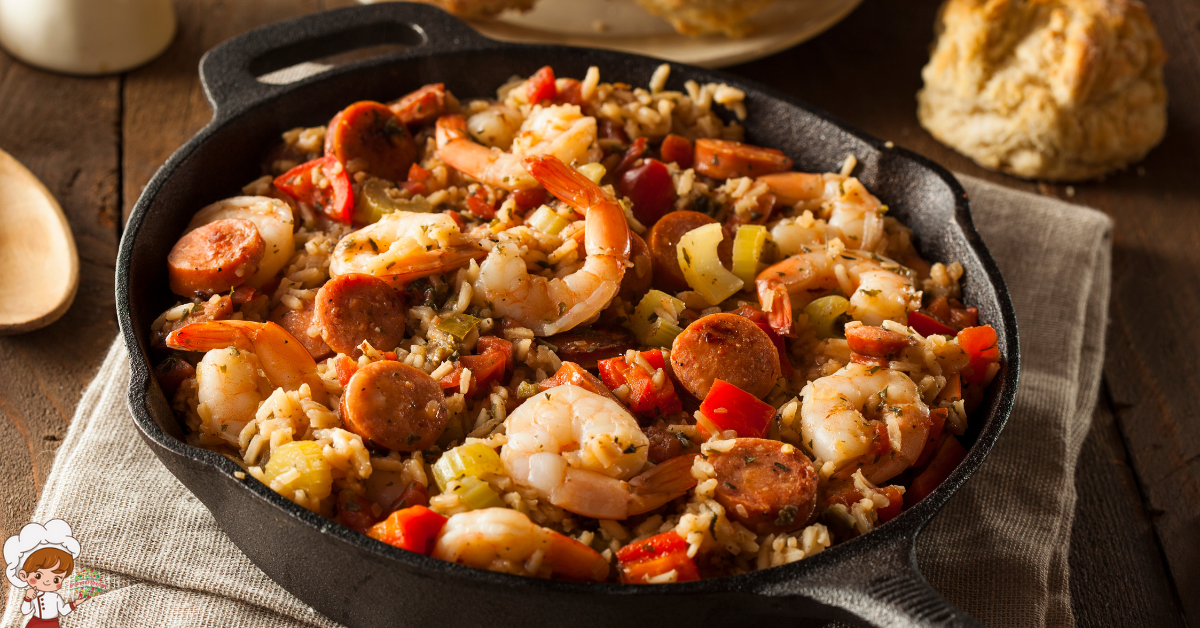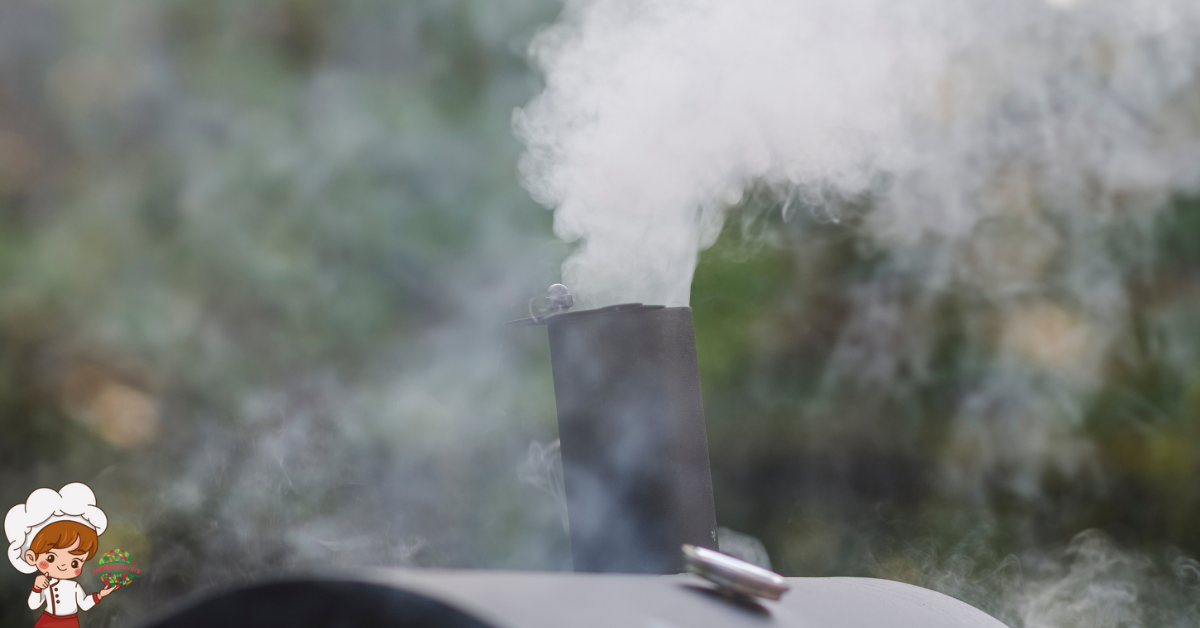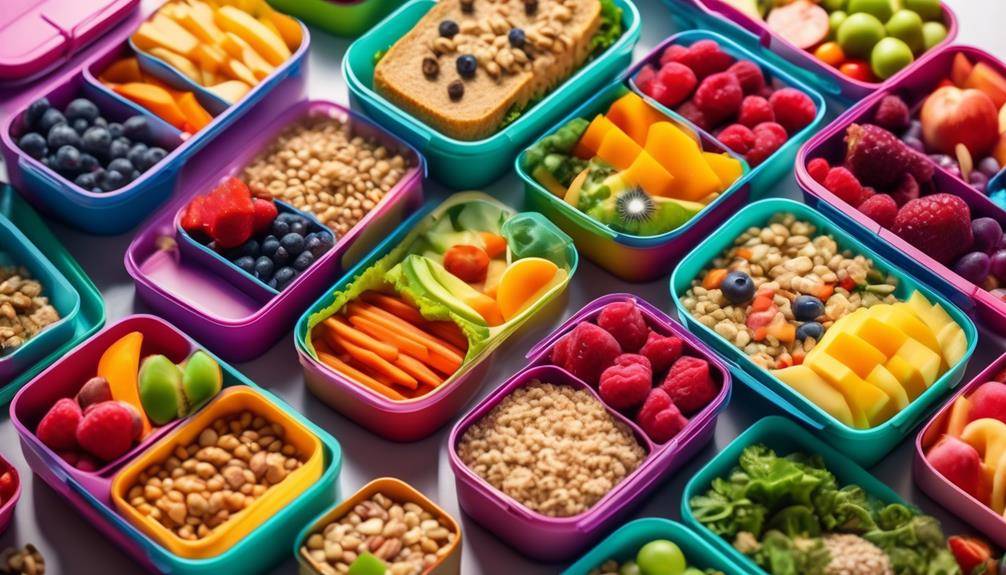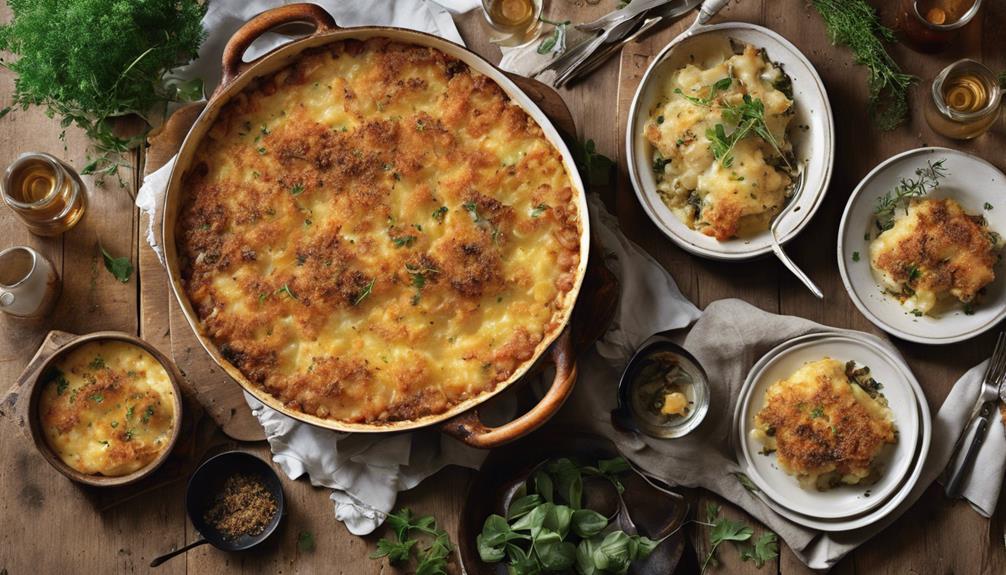The Best Family-Friendly Cajun-Creole Recipes

Family-Friendly Cajun-Creole Recipes; If you’re tired of the same old recipes and craving a taste of the South, look no further than family-friendly Cajun/Creole dishes. With their bold flavors and unique combinations of spices, these dishes are sure to leave your taste buds begging for more. Whether you’re in the mood for a rich and hearty gumbo, a spicy shrimp etouffee, or a savory jambalaya, there’s something for everyone to enjoy. So, why settle for the ordinary when you can bring a taste of Louisiana into your own kitchen? Get ready to embark on a culinary adventure that will transport you to the vibrant streets of New Orleans and beyond.
Classic Cajun Gumbo
Get ready to dive into the rich and flavorful world of Classic Cajun Gumbo, where bold spices, succulent meats, and a thick, savory broth come together to create a soul-warming dish that will transport your taste buds straight to the bayous of Louisiana.
Cooking techniques play a crucial role in achieving the perfect Cajun Gumbo. The base of this dish begins with a dark roux, a mixture of flour and oil which is slowly cooked until it reaches a deep, nutty brown color. This process requires patience and careful attention to prevent burning. Once the roux is ready, onions, bell peppers, and celery, known as the “Holy Trinity” of Cajun cooking, are added to the pot, along with garlic and other spices. The aromatics are sautéed until soft and fragrant, infusing the dish with their irresistible flavors.
Regional variations of Classic Cajun Gumbo exist, each with its own unique twist. In Southwest Louisiana, seafood takes center stage, with shrimp, crab, and oysters adding a briny freshness to the dish. In the northern parts of the state, chicken and sausage are commonly used, creating a heartier gumbo. Some variations even include game meats like duck or rabbit, showcasing the versatility of this beloved dish.
No matter the regional variation, one thing remains constant: the thick, savory broth that binds everything together. This broth is typically made by simmering the gumbo with a combination of stock, tomatoes, and spices, allowing the flavors to meld and develop over time. The result is a velvety, comforting broth that is the hallmark of Classic Cajun Gumbo.
Now that you’re armed with knowledge of the cooking techniques and regional variations, it’s time to get in the kitchen and start creating your own Classic Cajun Gumbo masterpiece. Let the aromas fill your home and the flavors transport you to the bayous of Louisiana.
Spicy Shrimp Etouffee
Get ready to tantalize your taste buds with a bowl of Spicy Shrimp Etouffee. This classic Cajun dish is packed with flavor and will transport you straight to Louisiana. With its rich and spicy tomato-based sauce, succulent shrimp, and aromatic blend of spices, this dish is sure to be a hit at your next gathering.
Ingredients and Preparation
To create a flavorful and satisfying Spicy Shrimp Etouffee, gather all the essential ingredients and follow these simple steps for a delicious Cajun/Creole dish that will leave your taste buds tingling with delight. This dish is all about the perfect balance of flavors and the cooking techniques used to achieve it. Start by sautéing onions, bell peppers, and celery in a hot skillet with a little oil.
This holy trinity of Cajun/Creole cuisine forms the base of the dish, adding a depth of flavor. Once the vegetables are soft and fragrant, add in the shrimp and cook until they turn pink and opaque. The combination of the aromatic vegetables and the succulent shrimp creates a mouthwatering aroma that will have your family eagerly awaiting dinner. Finally, season with a blend of spices such as paprika, cayenne pepper, and garlic powder, to give the etouffee its signature heat and depth of flavor. Serve this spicy shrimp etouffee over a bed of fluffy white rice and garnish with fresh parsley for a truly satisfying meal.
Cooking Time and Temperature
For the perfect Spicy Shrimp Etouffee, it is essential to carefully consider the cooking time and temperature to ensure that all the flavors meld together harmoniously. Cooking techniques play a crucial role in achieving the desired taste and texture of this Cajun/Creole dish. The shrimp should be cooked just until they turn pink and opaque, as overcooking can make them tough and rubbery.
As for the temperature, a medium-high heat is recommended to allow the onions, bell peppers, and celery to sauté to perfection. This will bring out the natural sweetness and depth of flavor in the vegetables. Recipe variations may suggest simmering the etouffee for a longer period to develop a richer flavor profile or adjusting the heat level by adding more or less cayenne pepper. By mastering the cooking time and temperature, you will be able to create a mouthwatering Spicy Shrimp Etouffee that will leave your family craving for more.
Serving Suggestions and Variations
Enhance the flavors of your Spicy Shrimp Etouffee with creative serving suggestions and explore variations to suit your taste preferences. When it comes to serving suggestions, a classic choice is to ladle the etouffee over a bed of steamed white rice. The fluffy rice acts as a perfect base, soaking up the rich and spicy sauce. For added texture and freshness, consider sprinkling chopped green onions or parsley on top. If you want to add a little heat, serve the etouffee with a side of hot sauce or a sprinkle of cayenne pepper.
When it comes to variations, you can easily modify the recipe to suit your dietary preferences. For a healthier option, swap out the white rice for cauliflower rice or brown rice. If you’re vegetarian, you can substitute the shrimp with diced tofu or vegetables like bell peppers and mushrooms. To make it gluten-free, use a gluten-free flour to thicken the sauce. Don’t be afraid to get creative and experiment with different ingredients to make this Spicy Shrimp Etouffee your own.
Savory Crawfish Étouffée
Now let’s talk about the savory crawfish étouffée. Get ready to experience a burst of flavor with this classic Cajun dish. We’ll cover the key points, including the ingredients and preparation, as well as cooking techniques and tips to help you create a delicious and authentic crawfish étouffée at home.
Ingredients and Preparation
To create a delectable Savory Crawfish Étouffée, gather the essential ingredients and follow these simple steps for a truly authentic Cajun/Creole experience. The key to a flavorful étouffée lies in the cooking techniques and seasoning options used. Start by heating a large skillet over medium heat and adding butter and flour to create a roux. Stir continuously until the roux turns a rich golden brown color.
Next, add onions, bell peppers, and celery to the skillet, cooking until the vegetables are tender. Now it’s time to add the star of the dish – the crawfish. Make sure to season the crawfish with a blend of Cajun spices, such as paprika, cayenne pepper, and thyme, to enhance their natural flavors. Stir everything together and let it simmer for about 10 minutes to allow the flavors to meld together. Serve the Savory Crawfish Étouffée over a bed of fluffy rice and garnish with fresh parsley for a truly satisfying meal.
Cooking Techniques and Tips
Once you’ve perfected the roux and sautéed the vegetables, it’s time to master the cooking techniques and tips for creating a mouthwatering Savory Crawfish Étouffée. To bring out the rich flavors of this traditional Cajun dish, it’s important to use the right cooking tools and understand the key flavor profiles. Start by using a heavy-bottomed pot or Dutch oven to ensure even heat distribution and prevent burning.
A wooden spoon is ideal for stirring the roux and scraping the bottom of the pot to release those delicious browned bits. When it comes to flavor profiles, Cajun cuisine is known for its bold and spicy flavors. Don’t be afraid to add extra cayenne pepper or hot sauce if you like it extra spicy. Remember to taste and adjust the seasoning as you go, as this will help you achieve the perfect balance of flavors in your Savory Crawfish Étouffée.
Flavorful Jambalaya
Bring the vibrant flavors of Louisiana to your dinner table with this mouthwatering, hearty jambalaya recipe. Jambalaya is a classic Cajun/Creole dish that combines rice, meat, and vegetables in a flavorful one-pot meal. The cooking techniques used to make jambalaya are what give it its distinct taste and texture.
To start, you’ll need a large, heavy-bottomed pot or Dutch oven. Heat some oil over medium-high heat and add your choice of meat, such as chicken, sausage, or shrimp. Cook the meat until it’s browned and cooked through, then remove it from the pot and set it aside.
Next, add the holy trinity of Cajun/Creole cooking: onions, bell peppers, and celery. Sauté them until they’re tender and lightly browned, about 5 minutes. This trio of vegetables adds a depth of flavor to the dish that is essential to jambalaya.
Once the vegetables are cooked, it’s time to add the rice, tomatoes, and spices. The rice will soak up all the delicious flavors as it cooks, resulting in a rich and flavorful dish. You can customize the spices to suit your taste, adding a little heat with cayenne pepper or smokiness with paprika.
Jambalaya is a versatile dish that can be made with a variety of proteins and vegetables, allowing for endless flavor variations. You can use chicken, sausage, shrimp, or a combination of all three. And when it comes to vegetables, the possibilities are endless. Bell peppers, tomatoes, okra, and even corn can all be added to jambalaya to enhance its flavor and texture.
Creole Red Beans and Rice
Now let’s turn our attention to another mouthwatering Cajun/Creole dish that will transport you straight to the vibrant streets of New Orleans: Creole Red Beans and Rice.
Creole Red Beans and Rice is a classic dish that is beloved in Louisiana. It is a hearty and flavorful meal that is perfect for feeding a crowd or enjoying as a comforting weeknight dinner. The dish is made by simmering red beans with onions, bell peppers, celery, and a variety of spices until they become tender and creamy. The beans are then served over a bed of fluffy white rice, creating a satisfying and delicious combination.
When it comes to cooking techniques for Creole Red Beans and Rice, it is important to give the beans enough time to cook and develop their flavors. This often involves soaking the beans overnight before cooking them, as this helps to reduce the cooking time and ensures that the beans cook evenly. Additionally, many recipes call for sautéing the vegetables before adding them to the pot, which helps to enhance their flavors and create a rich base for the dish.
To truly experience the authentic flavors of Creole Red Beans and Rice, it is essential to garnish the dish with traditional toppings. This can include sliced green onions, which add a fresh and vibrant element to the dish, as well as a sprinkle of chopped parsley for added color and flavor. Some people also like to serve the dish with a side of hot sauce or a sprinkle of Cajun seasoning for an extra kick.
Cajun Shrimp and Grits
Indulge in a tantalizing blend of flavors with Cajun Shrimp and Grits, a beloved Southern dish that combines succulent shrimp with creamy, buttery grits. This dish is a true crowd-pleaser, perfect for family dinners or entertaining guests. The beauty of Cajun Shrimp and Grits lies in its simplicity and the bold flavors it delivers.
To make this dish, start by cooking the shrimp with Cajun seasoning. The cooking techniques vary, but sautéing the shrimp in a hot skillet with a little oil is a popular method. This allows the shrimp to develop a nice crust while retaining their juicy tenderness. The Cajun seasoning adds a spicy kick, enhancing the shrimp’s natural flavors.
As for the grits, they are cooked in a combination of water and milk, resulting in a creamy and luscious texture. The secret to achieving perfectly cooked grits is stirring them constantly to prevent lumps from forming. Adding butter and cheese to the grits gives them a rich and indulgent taste.
Now, let’s talk about flavor variations. Cajun Shrimp and Grits can be customized to suit your taste preferences. For a smoky twist, you can add crispy bacon or smoked sausage to the dish. If you prefer a lighter option, try substituting the shrimp with grilled chicken or sautéed vegetables.
Tasty Crawfish Boil
Get ready to savor the mouthwatering flavors of a Tasty Crawfish Boil, a classic Cajun/Creole dish that will transport your taste buds straight to Louisiana. Cooking crawfish in a traditional Cajun style is an experience that combines bold flavors, vibrant colors, and a lively atmosphere.
To start, gather your ingredients: live crawfish, corn on the cob, red potatoes, andouille sausage, and a blend of traditional Cajun spices. The star of the show, the crawfish, should be fresh and live for the best results.
Begin by bringing a large pot of water to a rolling boil. Add in the Cajun spices, such as cayenne pepper, paprika, garlic powder, and onion powder, to infuse the water with a robust flavor. Once the water is seasoned, it’s time to add the crawfish.
Allow the crawfish to cook for around 10 minutes, until they turn a vibrant red color and the shells are slightly firm. The aroma of the spices will fill the air, enticing everyone around.
Next, throw in the corn on the cob, potatoes, and andouille sausage. These ingredients soak up the flavors of the boiling water, enhancing their taste. Let them cook for an additional 10 minutes, or until the potatoes are tender.
Once everything is cooked to perfection, it’s time to drain the pot. Spread out some newspaper on a large table and dump the contents of the pot onto it.
Gather your friends and family around, and get ready to dig in. The Tasty Crawfish Boil is best enjoyed with your hands, peeling the shells off the crawfish, savoring its succulent meat, and pairing it with the tender corn, potatoes, and flavorful sausage.
A Tasty Crawfish Boil is more than just a meal; it’s a social gathering, a celebration of Cajun culture, and a feast for the senses. So roll up your sleeves, grab a cold drink, and immerse yourself in the flavors of Louisiana with this classic dish.
Southern Fried Catfish
Get ready to indulge in a Southern classic that will leave your taste buds craving for more. The crispy cornmeal coating is the secret to achieving that perfect golden brown crunch on the outside, while the catfish remains tender and juicy on the inside. And let’s not forget about the tangy tartar sauce, the ideal accompaniment to cut through the richness of the fried catfish. So grab your skillet and get ready to savor the irresistible combination of flavors and textures that Southern Fried Catfish has to offer.
Crispy Cornmeal Coating
To achieve the perfect crispy cornmeal coating for your Southern Fried Catfish, start by generously seasoning the catfish fillets with a blend of aromatic spices. This will not only enhance the flavor but also add a delightful kick to every bite. Next, dredge the seasoned fillets in a mixture of cornmeal and flour, ensuring that every inch is evenly coated. The combination of cornmeal and flour creates a light and crispy texture that is simply irresistible.
Heat a skillet with oil to the perfect temperature, around 350°F, and carefully place the coated fillets into the hot oil. Cook until the coating turns golden brown and crispy, about 3-4 minutes per side. Serve your Southern Fried Catfish with a side of tartar sauce or remoulade for a tangy contrast. For a variation, you can add a touch of cayenne pepper to the cornmeal coating for an extra kick. Enjoy this classic Cajun dish with a side of coleslaw or hush puppies for a complete Southern meal.
Tangy Tartar Sauce
For a tangy and flavorful accompaniment to your Southern Fried Catfish, whip up a batch of homemade tartar sauce that will take your taste buds on a delightful journey. Tangy tartar sauce is the perfect condiment to balance out the crispy and savory flavors of the catfish. Making your own tartar sauce is easy and allows you to customize the flavors to your liking.
Start by making a homemade mayonnaise as the base for the sauce. Combine egg yolks, lemon juice, mustard, and a pinch of salt in a bowl, then slowly whisk in vegetable oil until the mixture thickens. Once you have your homemade mayonnaise, add chopped pickles, capers, onion, parsley, and a squeeze of lemon juice for a tangy and fresh twist. The result is a tangy tartar sauce that perfectly complements the crunchiness of the catfish.
Delicious Cajun Dirty Rice
Indulge in the irresistible flavors of Cajun Dirty Rice, a tantalizing dish that combines savory spices, tender meat, and aromatic vegetables. This classic Cajun dish is a staple in Louisiana cuisine and is known for its rich and hearty flavors. Dirty Rice gets its name from the “dirty” appearance it gets from the mixture of meat, vegetables, and spices.
To create this delectable dish, start by cooking long-grain rice according to package instructions. While the rice is cooking, prepare the meat mixture. Traditionally, ground pork or beef is used, but you can also use chicken or sausage. Brown the meat in a skillet over medium heat, breaking it up into small pieces. Drain any excess fat and set the meat aside.
In the same skillet, sauté a holy trinity of vegetables consisting of finely chopped onions, bell peppers, and celery. This trio of ingredients forms the base of many Cajun dishes and adds depth and flavor to the Dirty Rice. Cook until the vegetables are tender and fragrant.
Next, add the cooked meat back to the skillet along with a generous amount of Cajun seasoning. This blend of spices gives the dish its signature flavor and heat. Stir in some chicken broth to moisten the mixture and let it simmer for a few minutes to allow the flavors to meld together.
Finally, add the cooked rice to the skillet and mix everything together until well combined. The rice will absorb the flavors from the meat and vegetables, resulting in a deliciously seasoned dish. Serve the Cajun Dirty Rice as a side dish or as a main course with a side of greens or cornbread.
There are many variations of Cajun Dirty Rice, allowing you to customize it to your taste. You can add additional vegetables like carrots or tomatoes for added color and flavor. Some recipes call for the addition of liver or gizzards for a richer taste. And if you prefer a spicier kick, you can always amp up the Cajun seasoning or add some hot sauce.
Cajun Dirty Rice is a versatile and satisfying dish that is sure to please the whole family. With its bold flavors and comforting ingredients, it’s no wonder this dish has become a beloved staple in Cajun and Creole cuisine. So why not give it a try and experience the true taste of Louisiana in your own kitchen?
Authentic Shrimp Po’ Boy
Sink your teeth into the mouthwatering goodness of an authentic Shrimp Po’ Boy, a classic Louisiana sandwich that is sure to satisfy your seafood cravings. This iconic dish features succulent shrimp that are seasoned to perfection and nestled in a soft, fluffy baguette. Let’s explore the cooking techniques and best seasoning options to create a truly unforgettable Shrimp Po’ Boy.
- Cooking Techniques
- Deep-frying: The key to achieving that crispy exterior and tender shrimp is deep-frying. Heat up a pot of oil to 375°F (190°C) and carefully drop in the seasoned shrimp. Fry them until they turn golden brown, which usually takes about 2-3 minutes per side.
- Grilling: For a lighter and healthier twist, you can grill the shrimp instead. Thread them onto skewers and cook over medium-high heat for 2-3 minutes per side until they are cooked through and have a slight char.
- Sauteing: Another option is sautéing the shrimp. Heat some oil in a skillet over medium-high heat and cook the shrimp for 2-3 minutes, stirring occasionally, until they are pink and opaque.
- Best Seasoning Options
- Cajun Seasoning: The bold and robust flavors of Cajun seasoning are a perfect match for the Shrimp Po’ Boy. This spice blend typically includes a mix of paprika, garlic powder, onion powder, cayenne pepper, and other herbs and spices.
- Creole Seasoning: If you prefer a slightly milder flavor, opt for Creole seasoning. This blend often contains similar ingredients to Cajun seasoning but with less heat, allowing the natural sweetness of the shrimp to shine through.
- Old Bay Seasoning: For a unique twist, try using Old Bay seasoning. This popular seafood seasoning adds a tangy and slightly spicy flavor to the shrimp, elevating the taste of your Po’ Boy.
Now that you have mastered the cooking techniques and have the knowledge of the best seasoning options, it’s time to create your own authentic Shrimp Po’ Boy. Enjoy the delicious combination of crispy shrimp, fluffy bread, and bold flavors that will transport you straight to the heart of Louisiana.
Mouthwatering Cajun Crab Cakes
Transport yourself from the flavors of an authentic Shrimp Po’ Boy to the enticing world of mouthwatering Cajun Crab Cakes. These delectable cakes are a staple in Cajun and Creole cuisine, offering a burst of flavor that will leave you craving more. To create the perfect Cajun Crab Cakes, you’ll need to master the cooking techniques and use the best seasoning.
First, let’s talk about the cooking techniques. The key to achieving a crispy exterior and a moist, tender interior lies in the method of cooking. Start by combining fresh crab meat, breadcrumbs, diced bell peppers, onions, celery, and a touch of Cajun seasoning. Mix the ingredients gently, being careful not to overwork the crab meat. Then, form the mixture into patties and refrigerate for about 30 minutes. This will help the cakes hold their shape during cooking. When you’re ready to cook, heat a skillet with some oil over medium-high heat. Carefully place the crab cakes in the skillet and cook for about 3-4 minutes per side until they are golden brown and heated through.
Now, let’s talk about the best seasoning for Cajun Crab Cakes. The traditional Cajun flavors can be achieved by using a combination of spices such as paprika, garlic powder, onion powder, cayenne pepper, and dried thyme. These seasonings will give your crab cakes a bold and spicy flavor that is characteristic of Cajun cuisine. Remember to adjust the amount of seasoning according to your preference for heat.
Family-Friendly Cajun/Creole Recipes; Frequently Asked Questions
What Is the History of Cajun and Creole Cuisine?
Cajun and Creole cuisine have a rich history influenced by French and African cuisines. These dishes are culturally significant in Louisiana, reflecting the diverse flavors and traditions of the region.
Can These Recipes Be Made Without Seafood for Those With Allergies?
You can definitely make these recipes without seafood! There are plenty of vegetarian alternatives and creative ingredient swaps that will give you all the flavors and textures you love in Cajun/Creole cuisine.
Are There Any Vegetarian or Vegan Options for These Cajun/Creole Recipes?
Looking for vegetarian or vegan options for Cajun/Creole recipes? You’re in luck! Try a delicious vegetarian gumbo packed with veggies, or a flavorful vegan jambalaya made with plant-based protein. These dishes will satisfy your cravings without compromising your dietary preferences.
What Are Some Common Ingredient Substitutions for Those Who Cannot Find Certain Cajun Spices or Seafood?
If you can’t find certain cajun spices, try substituting with a blend of paprika, garlic powder, onion powder, and cayenne pepper. For seafood allergies, swap shrimp or crab with chicken or sausage for a tasty alternative.
Can These Recipes Be Made Ahead of Time and Frozen for Later Use?
Yes, these recipes can be made ahead of time and frozen for later use. By doing so, you can save time and have a delicious meal ready whenever you need it. The quality of these Cajun/Creole recipes will remain intact for a few months in the freezer.
Conclusion
In conclusion, these family-friendly Cajun/Creole recipes are sure to spice up your dinner table with their bold flavors and authentic taste. From the classic Cajun gumbo to the mouthwatering Cajun crab cakes, each dish is packed with deliciousness and will leave your taste buds begging for more. So gather your loved ones and enjoy these savory creations that will transport you straight to the heart of Louisiana. Get ready for a culinary adventure like no other!








